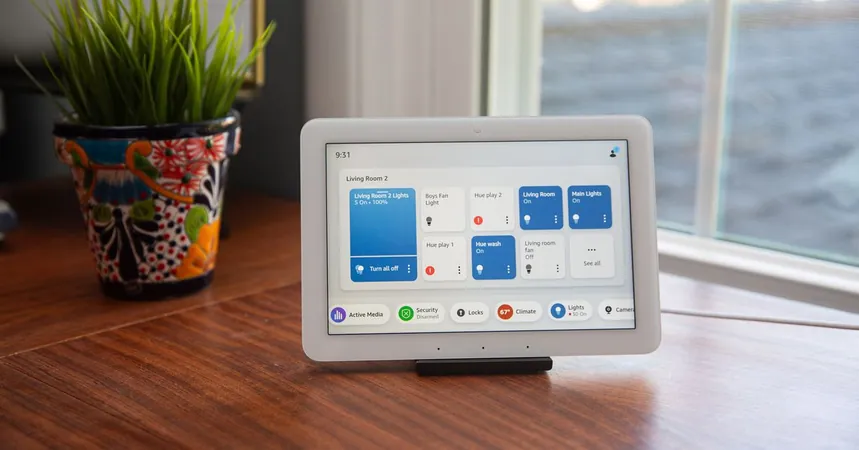
GM's Electric Future: A Bold Shift from Ultium Batteries
2024-10-08
Author: Chun
GM's Strategic Shift
General Motors (GM) is making headlines as it pivots away from its Ultium battery brand in a strategic move that signals a significant evolution in its electric vehicle (EV) strategy. At a recent investor event, Kurt Kelty, GM's Vice President of Batteries and a former executive at Tesla, revealed that the company plans to incorporate lithium iron phosphate (LFP) battery technology into its offerings. This shift aims to slash the costs of GM's electric vehicles by as much as $6,000, enhancing affordability for consumers.
Transition from Ultium to LFP
While GM has primarily utilized the more prevalent nickel cobalt manganese (NCM) batteries previously associated with the Ultium platform, the automotive market is increasingly recognizing the advantages of LFP batteries. Leading companies like Tesla and Ford have already adopted LFP cells, which are cheaper to produce and far less complex, eliminating the dependence on cobalt—a mineral that has garnered negative attention for its ethical sourcing issues. The goal to move away from cobalt reflects a broader industry trend to pursue cleaner and more sustainable battery technologies.
The Ultium Initiative
Launched in 2020, the Ultium brand aimed to establish a unified platform for GM's burgeoning EV lineup, including models like the Chevy Equinox and Blazer EVs, the Cadillac Lyriq, and the Hummer EV. Despite its ambitious start, the Ultium name never gained the recognition GM hoped for, prompting the company to rethink its strategy and move away from a "one size fits all" battery system.
New Developments and Collaborations
Kelty announced plans for a new battery cell development center, set to open in 2027 at GM's technology hub in Warren, Michigan. This move is a direct response to the fierce competition posed by Chinese battery manufacturers, who currently dominate the global supply chain. GM is committed to meeting production demands through 2025 and has reportedly addressed earlier battery manufacturing challenges that surfaced in late 2023.
Partnerships and Production Goals
The collaboration with key partners such as LG and Samsung SDI remains vital as GM embarks on building a new $3.5 billion EV battery plant in Indiana. This partnership is expected to bolster GM’s battery production capabilities in line with its ambitious EV goals.
Reduction in Battery Costs
Significantly, GM has achieved a remarkable reduction in battery costs, dropping prices to an average of $60 per kilowatt hour from 2023 to 2024, with expectations for an additional $30 reduction in 2025 thanks to the adoption of LFP technology. The company is exploring innovative designs that allow for LFP batteries to be integrated into its large EV chassis, previously built to accommodate Ultium NCM pouch-style batteries, all while maintaining impressive ranges of over 350 miles.
Streamlining Battery Systems
In a further effort to streamline its battery systems, GM plans to cut the number of battery modules by up to 75% using new prismatic cells. Additionally, higher-end cylindrical cells will be utilized specifically for performance vehicles, setting a clear distinction in its product offerings.
Recalibrating for Efficiency
Historically, GM has been recognized for producing larger and denser EV batteries compared to its competitors. However, in following Ford’s lead, which advocates that a range of 200 to 300 miles meets the needs of most drivers, GM is recalibrating its approach to prioritize efficiency and affordability.
Conclusion
As the auto industry transitions into a new era of electrification, GM's bold decisions may position the automaker as a formidable player in the global EV market. With a clear vision and a commitment to innovation, GM is gearing up to redefine its electric future.



 Brasil (PT)
Brasil (PT)
 Canada (EN)
Canada (EN)
 Chile (ES)
Chile (ES)
 España (ES)
España (ES)
 France (FR)
France (FR)
 Hong Kong (EN)
Hong Kong (EN)
 Italia (IT)
Italia (IT)
 日本 (JA)
日本 (JA)
 Magyarország (HU)
Magyarország (HU)
 Norge (NO)
Norge (NO)
 Polska (PL)
Polska (PL)
 Schweiz (DE)
Schweiz (DE)
 Singapore (EN)
Singapore (EN)
 Sverige (SV)
Sverige (SV)
 Suomi (FI)
Suomi (FI)
 Türkiye (TR)
Türkiye (TR)